
Objects Gallery
A mishmash of things
I recently had to use up some leave and so had a week off work. Unfortunately maintenance to the drains where I live meant I had to be out of home for the first day. Fortunately this give a chance to head for the Science Museum
General Impressions

Entrance
The hall at the entrance to the museum
My background is physics, and I’m currently an engineer, so the Science Museum is obviously one of my favourite destinations (it’s a while since the last visit but it’s always been the sort of place I’d wander round given time). They seem to have at least cut back on the pointless security to get in, though it still seems a bit of a random welcome (though perhaps that was accentuated by having queued outside before opening). The large stationary steam engines still greet the visitor, silently and without fanfare or much explanation. The first gallery, Exploring Space, remains one of the more coherent (and excellent) areas. There is connection between the well explained exhibits, a feeling that the gallery works as a whole. By contrast the Making The Modern World gallery beyond remains a mishmash of items, flung together with far too much hiding in the cases around the edges of the space (and in need of some attention it seems—there is still at least one poster declaring Rocket to be temporarily in Newcastle while in reality its been in Manchester since then and is now in its new home of the NRM).
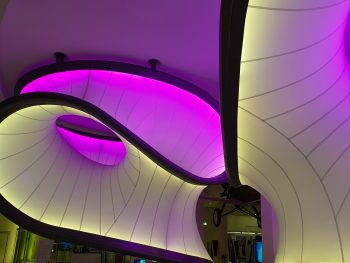
Maths Swirls
Neat ceiling in the maths gallery
Other galleries are also either a bit disconnected, or slightly random, or possibly misnamed. The Mathematics gallery may be shiny modern with a lovely curvy ceiling feature but actually features very little maths (and is maths itself science?) There are some really interesting exhibits within, but it’s really mainly computing (the museum’s build of the Babbage Difference Engine I saw part way through many years ago is here). Elsewhere there’s a large collection of clocks and watches, which is strange because there’s another case full of pocket watches somewhere. Yet others seems strangely out of place—should a bunch of what are essentially superstitious icons really be in the science museum’s medical gallery, or should that space be taken with something more rigorous? There’s a reconstructed chemist shop that seems to be an attempt along the lines of what the Museum of London achieve with their street but it’s a one off, and more of a surprise than anything.

Defender Of Britain
Hurricane And Spitfire
Feeling more neglected at the very top of the building sits the history of flight, a gallery which remains inexplicably dark (especially when compared to the stark whiteness of many of the spaces). It’s difficult to see what you’re looking at, and then difficult to work out what it is from the ill placed information cards.
All that said, it’s still a place of wonder—the first this, the beginning of that, Newton’s telescope, the original orrery (the one made for the Earl of Orrery from which the name comes—though there are many examples predating of course). Perhaps I was just having an off day, and a bit annoyed how poorly signed the way to a couple of the exhibits were that I was actually there to see…

Rocket
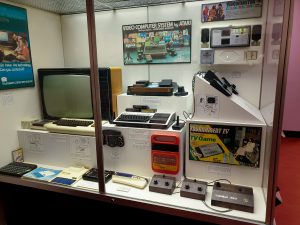
Gaming Gear
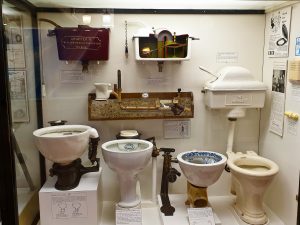
Toilets

Steam Train

Watch Out For That Plane!

Traction Engine

Random Stuff

Puffing Billy

Complex Compass

Jupiter

Moon 2

Soyuz
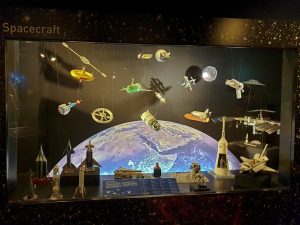
Some Of These Aren’t Real

Uri

Landing Module

Slick Car
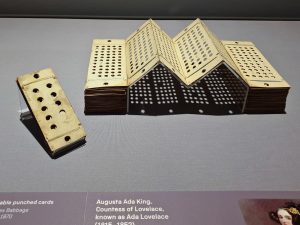
Punchcards

Maths Swirls

Plane

Accellorator
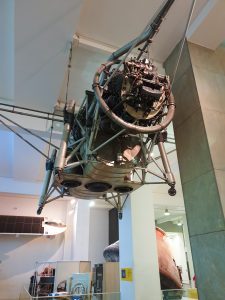
Flying Bedstead
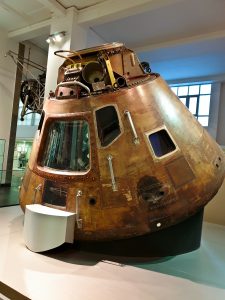
Apollo 10

Wells Clock

Stained Glass Car

Transmitter Tuner
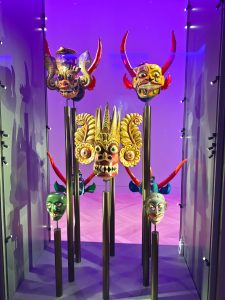
Heads
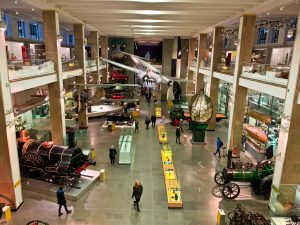
Objects Gallery

Defender Of Britain

Helicopter
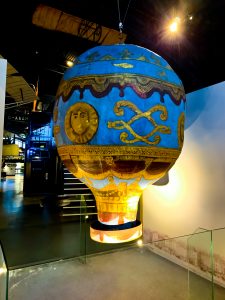
Balloon
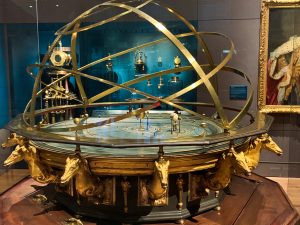
The Grand Orrery

Entrance
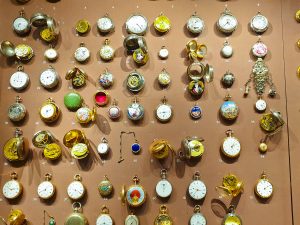
Watches

Old Tech
Top Secret
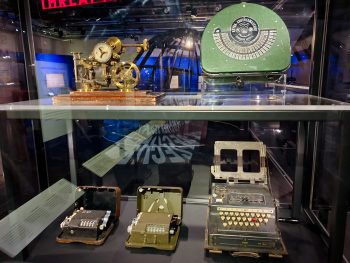
Encryption Machines
How to send secret messages without computers
The first of those was the Top Secret exhibition, which they almost seemed to be trying to keep secret by hiding it down at the back of the basement, unsignposted beyond the cafe where the mothers and children would congregate later in the day. All three exhibitions I saw were free but ticketed, though they were so quiet I doubt there would have been much of an issue if I’d had to get hold of a ticket on the day rather than booking a time online in advance as I did.
Top Secret delves into the murky world of, well, secrets—particularly those of government agencies in a celebration of GCHQ‘s 100th anniversary. It’s a bit of a strange subject, given how totally unacknowledged such clandestine work remains at the time it’s happening but also because it just seems a strange mishmash of the general and very specific. Hence there’s a whole array of mechanical encryption machines (and one begins to wonder just how many Enigmas the Science Museum have when wandering around the larger space—they seem to be everywhere), which give a good oversight of early twentieth technology state of the art alongside a very specific, unseen before 1943 machine used by the British to send, among other things, the decrypted Enigma intelligence. There’s a section on airship warfare, and the weaponry used to attack airships, that feels only tangentially related to codes and secrets. The inevitable section on Bletchley Park is duly present, but somehow lacks details even if it was cool to see some preserved bits of Colossus and original paper code breaking aids.

Spy's Lighter
Complete with secret compartment
There’s another large section no the Krogers, Russian spies caught in the 1960s. Again it’s a little window into that world, secret compartments in the base of cigarette lighters and the like, but feels too specific to that one case—a wider overview would have been nice.
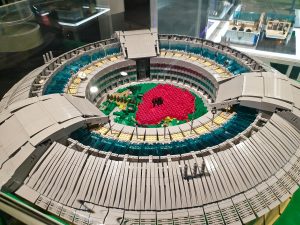
GCHQ Looking Down
In Lego
The exhibition ends with a bit on one time pads and the usefulness of randomness in encryption, alongside some Lego models of GCHQ’s famous torus shaped building, and the inevitable little shop. So one is left oddly unsatisfied by any depth; a whirlwind tour of the fairly well known secrets of the past but not a lot to get teeth into. And a lingering thought of what secrets are being hidden now.
The Art Of Innovation

Moon
Detailed drawing
I’d left a couple of hours between special exhibit timings to allow for seeing each and having a bit of a more general wandering around, so these weren’t really one after the other, but the second example of the day was The Art Of Innovation. As the name suggests, this is a look at the response of art to scientific progress and the social change it brings about. Some of the pieces have scientific value in themselves—a large detailed drawing of the Moon for example—whilst other, such as the mathematical curves of a Barbara Hepworth sculpture, are almost pure artworks. As such it’s a varied and mainly interesting exhibition that could equally have been at home in one of the art galleries from which some of the pieces were borrowed.
Science Photographer Of The Year
The final exhibition was the smallest, occupying a single if spacious room. The inaugural Science Photographer Of The Year from the Royal Photographic Society celebrates those images captured of real science that have additional artistic merit. Perhaps unsurprisingly there is a collection of astrophysics images, both of deep space and landscapes with our own glorious view of the heavens above. There are others that catch the eye though. A false colour electron micrograph (is that really photography?) of a tadpole; an orangutan being piggybacked on its way to a sanctuary; various soap bubbles and their colourful sheens. It doesn’t take long to get around, and is a little arty like the previous exhibit which actually wraps around this one, but worth a quick peruse.

The Grand Orrery
An impressive instrument, belonging to Queen Caroline, George II’s wife
And that was just about it. The shop offered a peculiar range of tack and nice items, a couple of presents were bought (including one for Joe as I think the PhD holding uncle should buy him the occasional educational toy). And then I whisked myself away again, to have a go at a stupidly difficult quiz at Pato Lounge.




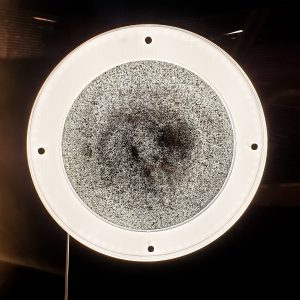
Comments and Pings